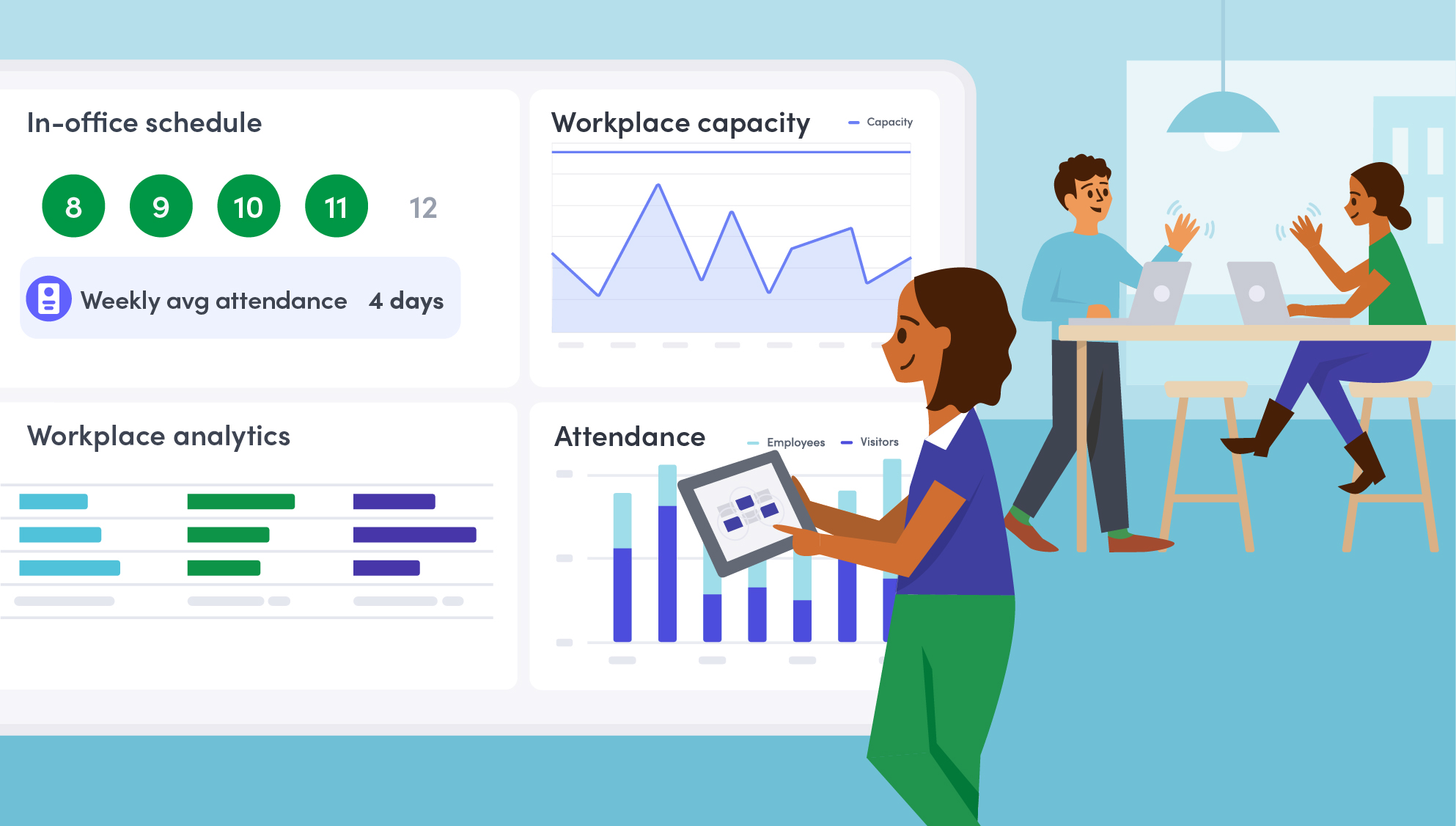Does your workplace ever feel unpredictable—empty one day, packed the next? Office space optimization turns that inconsistency into insight, so you can be smarter about how you use resources and design a space that runs efficiently every day.
From smarter layouts to flexible work zones, there are plenty of ways to optimize office space so your workplace feels balanced, efficient, and built for the way teams work today. Let’s dive in.
Why does office space optimization matter?
Optimizing office space does more than save money. It helps you create a space people actually like—somewhere that supports focus, teamwork, and everyday connection. When your workplace feels intentional, employees spend less time looking for space and more time getting work done.
You’ll see what’s actually working and what’s not. Maybe meeting rooms are always full while desks sit empty, or your team likes open seating over assigned spots. Having these insights makes it easier to make decisions that boost efficiency and make the workplace more enjoyable.
How to optimize office space with these 5 simple steps
Whether meeting rooms are full or desks sit empty, the five steps below can help you get the most from your space while keeping it balanced, flexible, and easy to use.
1. Understand how your space is used
Start by learning how people actually use your office. Which areas are always full? Which stay empty? Workplace data from desk bookings, meeting room reservations, or badge swipes can tell you a lot. Once you see the patterns, you’ll know where to make changes that matter.
{{protip-1}}
2. Create spaces that fit different work styles
An efficient office space supports every kind of work—focused, collaborative, and social. To do this, provide a mix of space types, like quiet zones, flexible desks, and open areas for teamwork. Give people choice so they can find the environment that helps them do their best work.
{{protip-2}}
3. Repurpose underused areas
If certain spaces sit empty, put them to better use. Turn a low-traffic storage room into phone booths or convert oversized meeting rooms into smaller huddle areas. Small adjustments like these can make your space feel more balanced and productive.
{{protip-3}}
4. Improve flow and wayfinding
A space that’s optimized should also feel intuitive. People shouldn’t waste time trying to find an open desk or meeting room. Use digital maps, clear signage, or even room displays to help everyone move through the office with ease.
{{protip-4}}
5. Keep measuring and adjusting
Office space optimization isn’t one-and-done. Keep an eye on how your space is performing using real-time data. Track occupancy, booking rates, and employee feedback so you can keep improving over time. The best spaces evolve as your team does.
{{protip-5}}
—
Office space optimization doesn’t have to mean a full redesign. Start by observing how people use your space, test small changes, and build on what works. Over time, those small shifts add up to a workplace that feels smarter, more flexible, and better aligned with how your teams work.
Ready to make your space work smarter? Check out our ebook, Space management tips to help your people and business thrive.
Pro tip: Use workplace tech that syncs data across your tools, like Envoy. When these systems talk to each other, you get a clear, accurate view of how your space is being used—so your team is never stuck with the tedious task of pulling reports from multiple systems.
Pro tip: Keep things flexible. Use movable furniture or modular setups so teams can easily adjust their space for a project or meeting. This ensures folks can make the space work for them—no matter the task at hand.
Pro tip: Review usage data every few months to spot trends before space goes to waste. This helps you spot which areas get the most traffic—and which ones might be ready for a refresh.
Pro tip: Swap static posters or outdated maps for digital screens that can display real-time updates, wayfinding info, and important announcements across your space. These modernize your workplace while making communication faster, clearer, and more engaging.
Pro tip: Use workplace analytics to guide decisions, not guesses. Tracking occupancy, booking patterns, and space usage helps you see what’s working and where to improve, so every square foot supports your team and your bottom line.
Read more
Searching for a visitor management solution? Learn what to look out for and how to choose the best tech for your team.
Managing your space well doesn’t have to be difficult. But if you want to be successful, you need the right approach.
A well-run workplace can set your team up for success. Learn why workplace management matters and how to do it right.
Workplace security is critical to the future of your business. Learn why it matters, what threats to watch for, and how to strengthen your workplace security plan.
In this post, we’ll explore what workplace compliance is and how to build a compliance culture for your organization.
With more folks sending personal packages to the workplace, having a sound mailroom management system in place is key.









